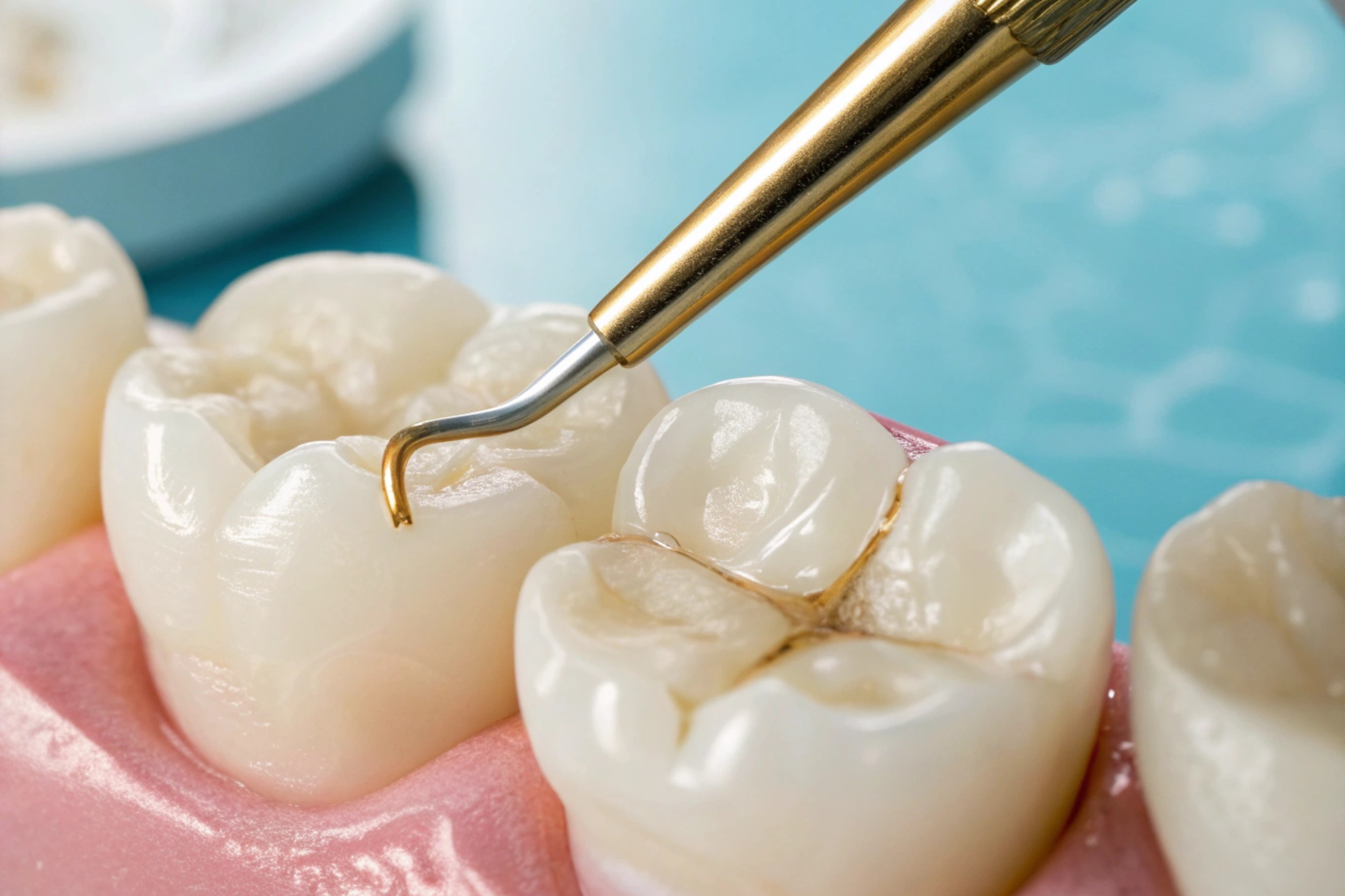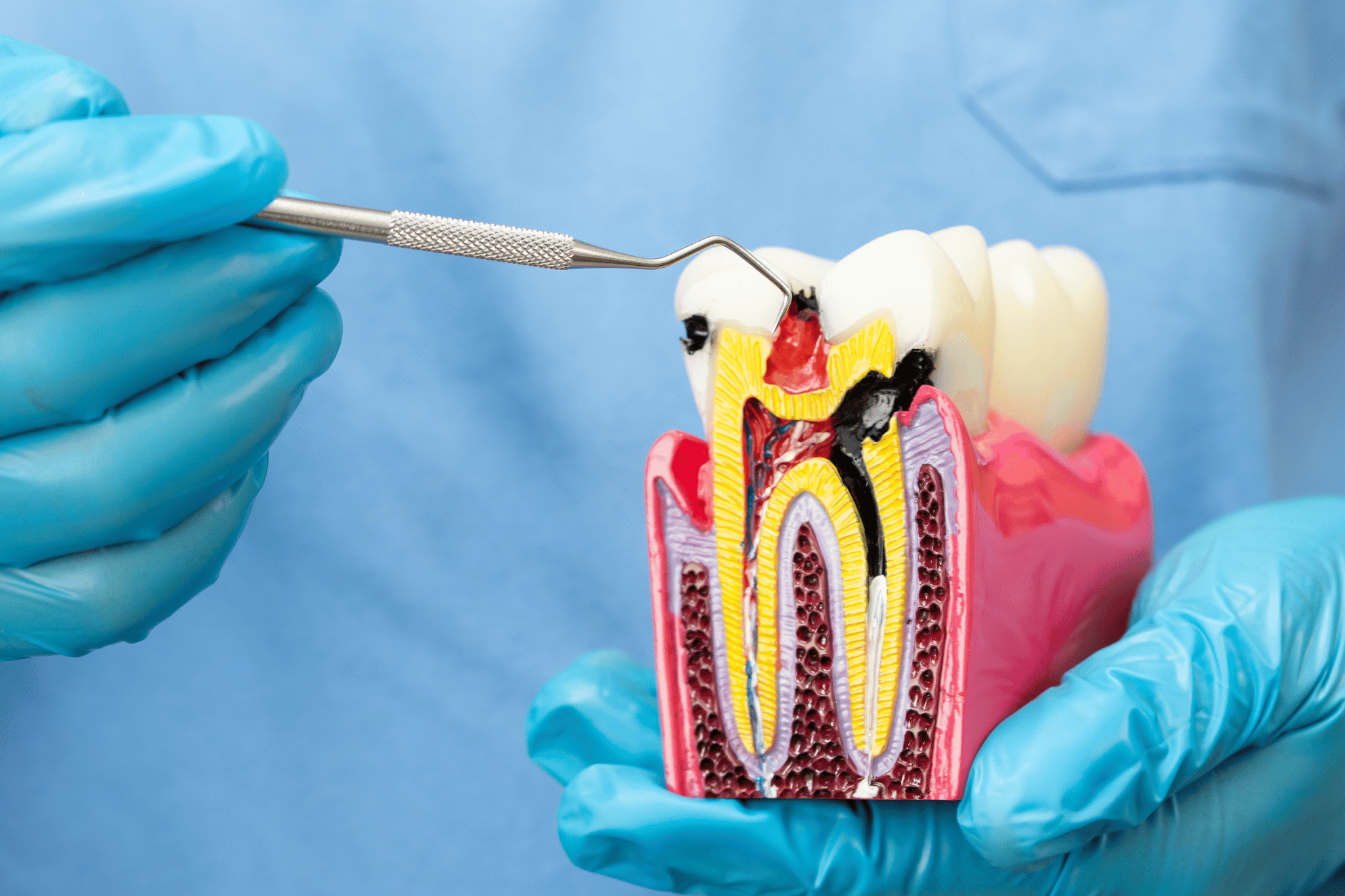What Happens When Cavities Go Untreated?
Even a small untreated cavity can quickly worsen if ignored. What begins as minor enamel demineralization can progress through deeper tooth layers, eventually reaching the sensitive pulp and nerve tissue inside. Early decay affects only the outer surface, but over time, it can spread and create serious oral health problems that extend beyond the tooth itself.
When a cavity is left untreated, it can progress from simple decay to severe infection. Most cavities follow predictable stages, with increasing risks at each step. Recognizing the warning signs and acting promptly can prevent minor problems from becoming dental emergencies.
Why Cavities Need Timely Treatment
Tooth decay doesn't reverse naturally once a cavity has formed, so professional treatment is necessary to halt progression and restore tooth structure. Small untreated cavities may seem insignificant at first, but they continuously expand as bacteria produce acids that dissolve tooth material.
Without intervention, bacteria can reach the inner layers of the tooth where nerves and blood vessels reside, causing painful infections that require more extensive and expensive treatment.
The Role of Enamel and Dentin in Cavity Progression
Tooth enamel acts as a protective shield, but it gradually demineralizes when exposed to acids produced by bacteria feeding on sugars and starches. Once enamel is breached, the softer dentin layer underneath becomes exposed. Dentin contains tiny tubules that lead directly to the tooth's nerve center, making teeth sensitive to temperature and pressure.
Leaving a cavity untreated allows bacteria to penetrate weakened enamel into dentin, where decay can accelerate. Because dentin is less mineralized than enamel, bacteria can move through it more quickly, spreading the lesion deeper into the tooth.
How Long Can You Leave a Cavity Untreated?
The timeline of cavity progression varies based on several factors, such as oral hygiene habits, diet, saliva flow, and the size and location of the decay. Some cavities worsen within a few months, while others progress more slowly over a year or longer.
However, the fundamental truth remains: an untreated tooth cavity will eventually worsen over time. Small cavities that might have required only a simple filling can progress to the point where root canal therapy or extraction becomes necessary. The longer you wait, the more invasive and costly the treatment becomes.
Long-Term Risks of Leaving a Cavity Untreated
Prolonged tooth decay can contribute to persistent pain, facial swelling, and heightened sensitivity that interferes with eating and drinking. As infection advances, it can reach the pulp chamber, creating severe pain and potentially leading to pulpal necrosis (death of the nerve tissue)
In advanced cases, infection spreads beyond the tooth into the surrounding jawbone, creating abscesses—pockets of pus that form when the body tries to wall off the infection. These abscesses can cause severe swelling, fever, and facial pain. Without treatment, the infection may spread to other parts of the head and neck, creating potentially life-threatening complications.
Symptoms of an Untreated Tooth Cavity
Recognizing the signs of tooth decay helps you seek treatment before minor problems become serious health issues.
Visual Symptoms
Common visual signs include dark spots or discoloration that don’t brush off. These areas often appear brown or black. As decay progresses, you may notice visible holes or pits in the affected tooth.
Persistent stains that resist normal cleaning efforts may indicate underlying decay rather than superficial discoloration. Advanced untreated cavities can also lead to chips or cracks as weakened tooth structure breaks down under regular chewing forces.
Sensory Symptoms
Tooth sensitivity to hot, cold, or sweet foods often signals that decay has penetrated the enamel and reached the dentin layer. This sensitivity may start as mild discomfort but typically worsens as decay progresses.
Pain when chewing indicates that decay has compromised tooth structure or reached deeper layers where nerves reside. This pain can range from dull aching to sharp, shooting sensations depending on the extent of decay.
Signs of infection, including swelling in the gums or face, pus drainage, persistent bad breath, or a bad taste in the mouth, require immediate dental attention. These symptoms indicate that bacteria have created an active infection that's spreading beyond the original cavity.
Preventing the Progression of Untreated Cavities
Early detection and treatment are the best defense against serious complications. Regular dental exams help identify decay in its earliest stages, when care is most straightforward and effective.
Professional fluoride treatments help strengthen enamel and can even reverse very early decay before it becomes a full cavity. Dental sealants provide additional protection for molars, which are vulnerable to decay due to their deep pits and fissures.
Maintaining consistent oral hygiene through twice-daily brushing and daily flossing removes the bacterial plaque that causes decay. Choosing tooth-friendly foods and limiting sugary snacks reduces the fuel bacteria need to produce cavity-causing acids.
When It's Time to Address Untreated Cavities
The treatment for a cavity left untreated depends on how far the decay has progressed. Early-stage cavities may only require a simple filling, in which the dentist removes decayed material and fills the space with composite resin, amalgam, or another restorative material.
Moderate decay that has spread more extensively might require an inlay or onlay—custom-made restorations that fit into or over the damaged portion of the tooth. These provide more strength and durability than standard fillings for larger areas of decay.
Advanced decay that reaches the tooth's pulp requires root canal therapy. This procedure removes infected nerve tissue, cleans and disinfects the inner chambers of the tooth, and seals the space to prevent reinfection. Understanding root canal procedures helps patients feel more confident about this important treatment.
In extreme cases where decay has destroyed too much tooth structure to save, extraction becomes necessary. This represents the worst-case scenario that early treatment could have prevented entirely. Missing teeth require replacement with dental implants, bridges, or dentures to maintain proper bite function and prevent remaining teeth from shifting.
Protect Your Smile from Untreated Cavities
Cavities don’t heal on their own once a hole has formed—early action saves teeth, prevents pain, and avoids costly procedures. What starts as a small area of decay that needs a simple filling can progress to a severe infection requiring root canal therapy or extraction if left untreated.
Delaying care allows decay to penetrate deeper, creating pain and complications that affect eating, speaking, and daily function. Treating advanced decay typically costs more—and requires more visits—than addressing cavities early.
Maintaining good dental health supports overall wellness and confidence. Oral infections can tax the body’s defenses and contribute to broader health problems.
At Total Health Dental Care, our team provides comprehensive cavity treatment and preventive care to support long-term oral health. We prioritize early detection and patient education to help prevent serious complications.s.
FAQ
Can an untreated cavity kill you?
While rare, severe untreated cavities can potentially lead to life-threatening complications.If infection spreads beyond the tooth into surrounding tissues or the bloodstream, complications such as Ludwig’s angina, brain abscess, or sepsis can occur. These outcomes are uncommon and usually follow prolonged neglect, but they underscore why even minor cavities need professional care.
Can a cavity go away on its own?
No, untreated cavities cannot heal on their own. Once bacteria have created a hole in the tooth enamel, the damage is permanent without professional intervention. The bacteria causing decay won't leave on their own, and tooth structure cannot regenerate the way other body tissues can.
Are all cavities painful?
Not all cavities cause pain, especially in their early stages. Small untreated cavities confined to the enamel layer often produce no symptoms, which is why regular dental exams are crucial for early detection. Pain typically develops as decay reaches dentin or the pulp. Some people may feel slight discomfort even with advanced decay—another reason not to wait for pain before seeing a dentist.



